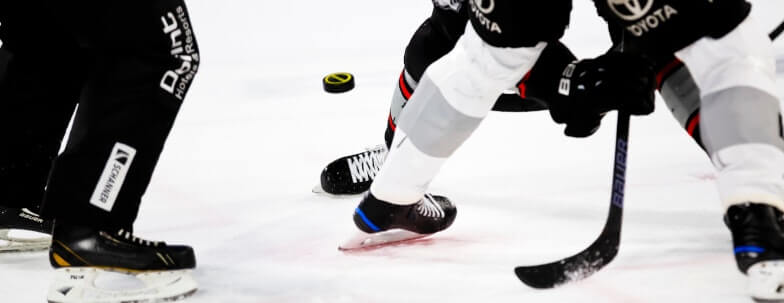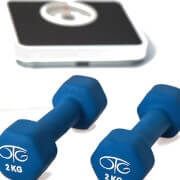Is USPHL Pay to Play? Here’s the Truth

USPHL Hockey
Are you looking to advance to being a professional hockey player? You’ve probably heard of The United States Premier Hockey League, with the Premier Division being the top tier of the USPHL League structure. If you’re hoping to join the USPHL, you may be wondering how much it costs to join or if it’s a free-to-play league.
The USPHL Premier and all Tier 3 junior leagues are pay to play with the tuition fee ranging from $7,000 to over $11,000 a year. With the USPHL Premier being one of the top Tier 3 leagues in the country, the fee includes some meals, all travel, team gear, and equipment.
Contrary to assumptions, the USPHL is one of the top leagues in North America. Some players move to NCAA programs and Tier II daily. Read on to learn why the USPHL is a fantastic development league and what it takes to join it.
What Is the USPHL League?
The United States Premier Hockey League, also known as USPHL, was founded in 2012. The 2020-2021 league consists of over 500 teams and fields over 11,000 players, and more than 100 organizations are involved.
Player ages range from 6 years to 21 years. The teams are diverse, and you can find them in the West Coast, Midwest, South, and North. What’s more, there are different divisions from junior to all-youth, which includes the Eastern Junior Elite Prospects League.
The Junior Division has the National Collegiate Development Conference. The NCDC is a tuition-free junior hockey division focused on Division 1 collegiate development and beyond. There are Premier and Elite Divisions as well.
Teams operating at the Squirt Minor and Bantam Major Divisions are featured in the High-Performance Youth League. The 2020-2021 season is expected to have teams merge into the Eastern Junior Elite Prospects League.
What Is the Structure of the USPHL?
For players looking to graduate from Bantam and that want to join Junior Hockey and eventually get into professional hockey, the United States Premier Hockey League is meant to make this process easier.
A player goes through each division, which provides a good foundation for becoming a collegiate or professional hockey league player. For a team to get into a specific USPHL division, certain team aspects are evaluated. They include a history of success, integrity, rink ownership, strong player pool, geography, and financial strength.
Understanding the Tier System of Junior Hockey
There are three levels or tiers of junior hockey in the U.S. These leagues are certified by the USA Hockey Junior Council. That’s where the teams and leagues get their classifications based on operation standards and quality of play. All three junior hockey tiers in the United States are NCAA-protected, which doesn’t apply to Major Juniors.
Tier 1
The USHL is the highest level of junior competition and falls under the Tier 1 hockey league in the United States. It’s been operational since 2002 when it was chosen as the only Tier 1 junior hockey league in the country.
The United States Hockey League has more than 15 teams through the Midwest. Players end with the Clark Cup Championship, while the regular-season champions get the Anderson Cup.
One of the reasons why USHL is highly scouted by college coaches is that the league is NCAA-protected. That means the players get to maintain their college hockey eligibility, which is a plus.
Also, Tier 1 is the only level without a cost to the player. Housing is provided by the team as well as all equipment. The USHL operates with the highest set of standards. Players within this tier have some of the best hockey coaches, quality office facilities, and the right practice to the game ratio when it comes to balancing the maximum and the minimum number of league games.
USHL also provides the right balancing in age groupings with categories of 17, 18, 19, and a few 20-year-old players. The focus is to develop the players and get them to the next level. The United States Hockey League is an excellent choice if you are a player looking for development, experience, and to join the best league in the country.
When it comes to statistics, there are 247 UHL alumni under contract in the National Hockey League. Over 250 USHL players are committed to playing college hockey as it’s the preferred way to advance to NCAA hockey and the best route to the NHL.
During the 2013-2014 season, 30% of all NHL players came from NCAA hockey. What’s more, 92% of college hockey players achieve their degrees according to the NCAA.
Tier 2
Under the Tier 2 league is the North American Hockey League or the NAHL. Although it’s a level below the United States Hockey League, it still maintains a high level of competition in regards to standards and talent.
There are more 20-year-old players in this tier. The goal is to maintain the college eligibility of its players. Most players are scouted by NCAA Division III and Division 1 programs.
Tier 3
A lot of junior hockey leagues fall under Tier 3, including the:
- U.S. Premier Hockey League (USPHL)
- Eastern Hockey League (EHL)
- Minnesota Junior Hockey League (MJHL)
- North American 3 Hockey League (NA3HL)
- Northern Pacific Hockey League (NPHL)
- Metropolitan Junior Hockey League (MJHL)
All of these leagues in Tier 3 are all pay to play leagues. They are two steps under the USHL and a level below the NAHL. A point worth noting is that the Tier 3 leagues do not have as high standards as the USHL. Some NCAA coaches do not scout players under these leagues as much.
How Does USPHL Work as a Pay to Play League?
USPHL is a pay to play league, which means that a player needs to pay between $8,000 to $12,000 in fees. That money is intended to cover the player’s uniform, equipment, travel-related expenses, and practice gear.
In some instances, the fee may cover housing, but in others, the accommodations come at an extra cost. When you analyze all those costs, you could have up to $10,000 in financial commitments.
The United States Premier Hockey League operates in 17 states as it is the largest amateur hockey league. It has 171 teams, with the players ranging from 8 to 21 years. Many players advance to the collegiate level, with others going to the professional level of the NHL and other leagues around the world.
Unknown to many, the USPHL Premier Division gets more players into NCAA college hockey compared to other Tier 3 Leagues. Players get team options from Florida, Maine, Minnesota, and more.
Once you join the USPHL, you will have to undergo thorough on-ice training and deal with a regular-season schedule to advance your hockey-playing skills. You may also have to go through off-ice training to develop agility, speed, and strength. The best part is that when you join this training program, you get training from qualified coaches and trainers used by NCAA and NHL teams.
Conclusion
The USA Hockey Junior Council classifies junior hockey under three tiers. The USPHL falls under Tier III, and all hockey leagues under this tier are pay to play leagues. The best part is that all tiers are NCAA-protected, which is an added advantage.
Understanding how the tier system works will help you determine the best place to advance your hockey career. Speak to your coach to know more about joining the USPHL and the amount you may need to pay before entering the league.
Sources
- College Hockey Inc.: Percentage of NCAA Alumni
- Wikipedia: Understanding United States Premier Hockey League
- USPHL: Why Go the NCAA Route?




